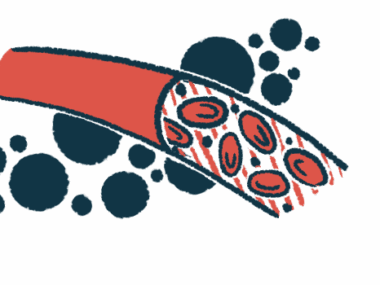How a Lightbulb Moment Led to My Ankylosing Spondylitis Diagnosis
New columnist Jemma Newman shares how her 'Joint Journey' began
Written by |

Daily conversation topics are a bit different at our house. Instead of discussing the news or an upcoming holiday, we’re often chatting about stiffening joints, eye problems from iritis, or the best way to deal with a painful flare. Both my husband and I have ankylosing spondylitis (AS).
At our wedding, while gazing joyfully into each other’s eyes, we said the words “for better or for worse, in sickness and in health.” We meant those words with every fiber of our beings, but neither of us realized that within a few years we’d both be diagnosed with the same chronic autoimmune disease.
I mean, what are the chances of meeting someone else with a rare disease, let alone already being married to them? It’s not as if we fell in love in the waiting room of a rheumatology department (though I bet that would make an interesting romantic comedy script).
To say we were shocked is putting it lightly.
My name is Jemma Newman, and my journey with AS started after the birth of my second child. Bringing a newborn baby home is a time of both delight and exhaustion, and it was a few months before I started feeling an agonizing burn in my spine at the same time every night.
Getting a good night’s sleep soon became more difficult than wrestling an angry octopus. The smoldering pain in my thoracic spine (the section of spine attached to the rib cage) would start at 2 a.m. The pain would escalate quickly and felt like someone was holding a blowtorch to my spine while a giant crushed my vertebrae.
Knowing the pain and frustration that were coming, I came to dread going to bed. No amount of stretching, over-the-counter painkillers, or utter exhaustion could help me sleep through the nighttime agony. In the morning, I would sit rigidly in my favorite chair, trying to feed my baby boy and be present with my busy toddler. Meanwhile, my back, shoulders, and neck were so stiff that I could have used them as a kitchen benchtop.
Well-meaning family and friends consoled me that the pain was probably just bad posture from breastfeeding or postpartum back pain. In desperation, I tried exercising my way out of it, increasing my visits to massage therapists and physiotherapists, spending an exorbitant amount of money on a new bed topper, and bolstering my legs and back with pillows to try to “align my spine.” Nothing put even the slightest dent in my nighttime pain.
Months later, I had a lightbulb moment. It occurred to me that my uncle has ankylosing spondylitis, which I knew came with back pain. Could it be hereditary, I wondered? To find out, I asked my doctor for an HLA-B27 gene test, which is a common first step in diagnosing AS. Sure enough, my blood test came back positive. Having that hereditary connection was pivotal, and saved me months, or years, of fruitless tests, dead-end treatments, and symptom research.
The gene test result was a new beginning. In December 2019, an MRI at the hospital supported a diagnosis by my new rheumatologist of ankylosing spondylitis and HLA-B27-positive spondyloarthropathy. What a mouthful.
You might think that a diagnosis of a lifelong, chronic, and degenerative disease would be a sad day, but that positive result made me very excited. With a diagnosis, I could finally focus on moving forward and treating the disease through a combination of medication, lifestyle changes, and holistic therapies.
Ankylosing spondylitis comes with many ups and downs, curves and side steps, challenges and discoveries. I welcome you to follow along in this column as I explore our joint journey, with my wonderful husband at my side.
Our symptoms, bodies, and viewpoints may differ, but every voice is welcome in the ankylosing spondylitis community. Let’s start more conversations about rare diseases. I believe that the more stories we share, the stronger we are.
Note: Ankylosing Spondylitis News is strictly a news and information website about the disease. It does not provide medical advice, diagnosis, or treatment. This content is not intended to be a substitute for professional medical advice, diagnosis, or treatment. Always seek the advice of your physician or other qualified health provider with any questions you may have regarding a medical condition. Never disregard professional medical advice or delay in seeking it because of something you have read on this website. The opinions expressed in this column are not those of Ankylosing Spondylitis News, or its parent company, Bionews, and are intended to spark discussion about issues pertaining to ankylosing spondylitis.







Leave a comment
Fill in the required fields to post. Your email address will not be published.